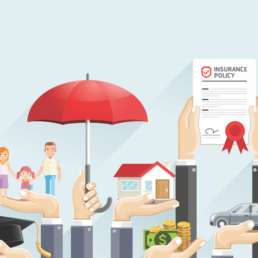Enabling Growth Through Practice Management
Growth Strategies
In the world of financial advisory, growth strategies often focus squarely on the end client; after all, growth is achieved through new client acquisition or new asset acquisition from existing clients. While this logic is not incorrect, it fails to acknowledge the intricacies of third party distribution. Manufacturers that support third party sales forces are actually dealing with two sets of clients: (1) the end client, whose assets will be managed, and (2) the third party financial advisors, who need to be convinced to service the clients in the way the manufacturer deems fit.
By simply driving down a highway and noting the billboards in any major financial hub, one is reminded just how concentrated financial advisory is. Manufacturers with third party distribution have the heavy burden of not only protecting their clients from migrating to their competitors, but also of filtering these efforts through an independent advisory force.
Given these compounded obstacles, how does a firm with a third party distribution model enable growth?
Many of our clients have come to us with this predicament. In short, the answer lies in a practice management strategy that is well-designed, integrated with the client value proposition, and properly communicated. Here’s our three step plan:
Define your value proposition
Defining your niche is critical. The first step is choosing the appropriate ratio of quality/comprehensiveness of services to client cost. Do you offer your clients Cadillac service for a hefty price? Are you trying to compete with the discount brokerages and offer more reasonably priced, bare-bones services?
Ensure your advisor offerings align with that value proposition
Once you’ve defined your brand promise, you need to be sure you can deliver on it. This is where the tools you give your advisors become critical. Did you promise your clients end-to-end financial planning capabilities? If so, you better ensure that your advisors are approaching planning in a standardized way and equipped with the appropriate tool(s) to do so. Did you promise your clients a robust discretionary offering? If so, you may want to consider giving advisors the option of directing these accounts to a centralized pool managed by experts. Did you promise your clients continuity of service, no matter what? If so, it is imperative that you offer your advisors substantial succession planning services and potentially even guaranteed book buy back.
Employ that value proposition to market offerings to advisors
This final step may be the easiest one, but it is also the most oft forgotten by manufacturers. Firms may offer really powerful tools and services to their advisors, which in turn can transform the way they service their clients. However, if the client-benefit of these tools is not made clear to advisors, they are not incentivized to harness them. Third party distribution models that offer a great deal of advisor independence particularly struggle with this piece – how do they strongly encourage consumption while still respecting advisor independence? This is a challenge we have taken on in our work. In our experience, we have found that advisors are not opposed to trying new services, but they need to be sufficiently convinced of the offerings’ value, especially in circumstances where they are being asked to pay an incremental fee for use. The solution to this challenge lies in the marketing of the offerings. The two most powerful arguments for advisor adoption are 1) that the offering actually works and 2) that the offering presents a clear benefit to clients. Both of these arguments can be clearly and efficiently communicated through advisor testimonials– these can be shared in written publications, or ideally, via live panels where advisors that have used the offerings tout their benefits to their clients and their overall practices.
Many of our clients have found that an integrated and clearly communicated practice management offering not only leads to increased asset acquisition, but also results in a significantly stronger brand promise and, of course, happier end clients.















































